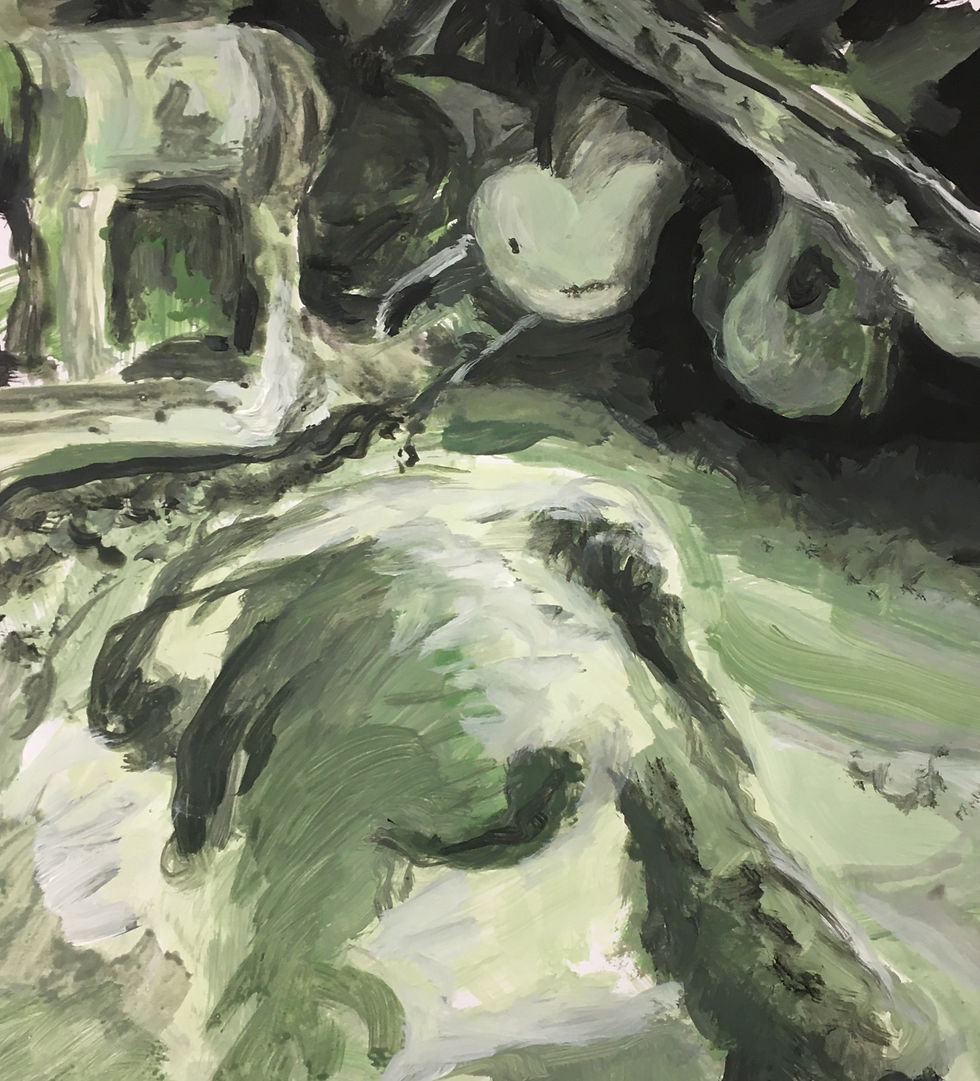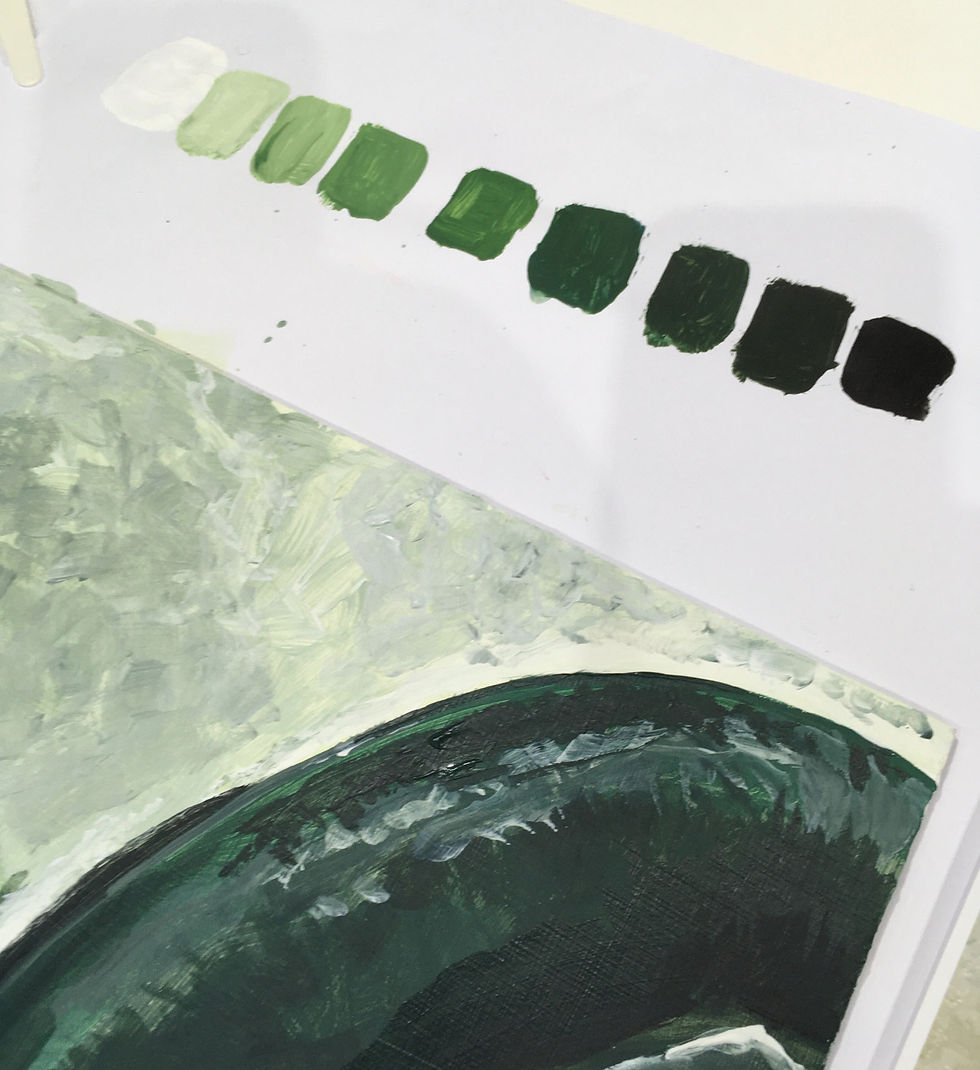Paint Workshop - time to get the brushes out, finally.
- carldurban
- Dec 18, 2020
- 3 min read
When I had to chose the second of my workshops for this unit I was really torn between Print and Painting. One I had a lot of experience, one I hadn't really done for a long time. Would I find Print too similar to where I had come from, albeit being in a more creative area or did Paint intimidate me, would I be able to create what I wanted to create or had I left it too late to start tackling this area. I chose Paint, it was nagging at me that I wanted to see what I could do and obviously learn.
After a briefing session about what the workshop was about and how we were going to develop several pieces of work and the guidance given I was so glad I had tried this subject. It might not work but I was learning new aspects of painting.
One of the hardest aspects was choosing an image that I could paint that not only worked with the methods we were going to learn but also something that fitted with my current area of interest. This was the tricky bit as the references I had brought along wouldn't really work and probably needed further thought and exploration. So I found an alternative image and used that, it was something I had found interesting on a walk but could be could be considered quite abstract if cropped in. It is a rust trailer on Overstrand beach that has corroded so much it is difficult to actually determine the detail, especially if you crop in.

After priming three pieces of board (MDF) with Gesso it was time to start looking at the underpainting method in acrylic before working in oil. Craig described the three main colours used to underpaint:
Grisaille (greyscale) Historically, this method would be used for underpainting and has heritage in times when coloured pigments were scarcer. It was also used a method to depict sculptures, often on the outside panels of altar pieces.
Brunaille (browns) Often also used as an underpainting method or as a finished work.
Verdaille or verdaccio (greens) Historically used for underpainting of flesh in western painting.
This last method is why a lot of paintings after time show the flesh to have a greenish tint and also when some have been restored as the top paint has been thinned.
I decided for my trial piece (on paper) I would go for the verdaccio method to give the metal a base. The first thing to do was to create a palette of tonal colours to use from white to black with a full range in between.


I turned the image on the screen to mono to give me the tonal qualities and then put down a loose representation of the crop I wanted to try. This was purely a practice before using one of the prepared boards. I also experimented with putting a tint over the piece in certain areas using an acrylic medium and certain colours. This proved interesting and something that would prove useful when I started to use the actual boards and a different subject matter.

Time to play with the boards and use a different subject, equally abstract.

A challenging subject. It was from an image I took in a recent cold snap where a glass candle container in the garden had filled with water and frozen but some of the candle was still visible. It is an interesting image, abstract and could be quite a challenge to paint as it already is quite striking with lots of colours and detail.

Again I used the verdaccio method as the image had an underlying green colouring, with elements of blues and some warmer areas that I was looking to pick up with a tint wash later.

Not a brilliant image but it does show it with all the green in place to give it the form I was looking for. Now just to add some acrylic medium tints to bring out some of the other colours.

By adding some blues and yellows as well as a very small area of a faint red it had started to give it a better representation of the palette from the original. Now I have to wait until the next workshop to see how we develop this in oils. I really enjoyed this process and I am keen to do more of this and look to see if I can bring it in line with my current area of exploration into communication, networks and isolation.







Comments